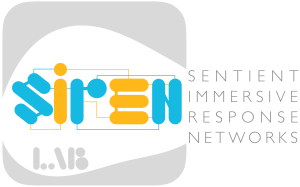Research programs
OBJECTIFS DU PROGRAMME
- Développer un système de pilotage agile des risques et opportunités fournisseurs.
- Concevoir une méthodologie instrumentée de conception et/ou d'amélioration de la résilience des entreprises.
Il s’agit de donner des clés aux décideurs afin de mieux prendre en compte les risques et opportunités auxquels leur activité est soumise et ainsi d’améliorer l’agilité et la résilience de leurs chaines logistiques. Les travaux s’appuieront sur la capacité à développer des modèles permettant de :
- Établir des alertes à venir dans un futur plus ou moins proche ;
- Évaluer les conséquences supposées de ces évènements (risques ou opportunités) sur l’activité de la chaine logistique concernée ;
- Suggérer, le cas échéant, des plans d’actions permettant de limiter l’impact des risques ou de mieux bénéficier des opportunités.
Afin de produire ces éléments, le programme de recherche propose de développer des solutions « immersives » basées sur des technologies telles que la réalité virtuelle, la réalité augmentée, les jeux sérieux multi-joueurs, la simulation holistique, les tableaux de bord interactifs, les cockpits et tours de contrôle, etc. Cette approche « immersive » doit permettre aux décideurs de bénéficier autant que possible d’un environnement étendu permettant de disposer d’une vision claire, dynamique, interactive et de confiance pour supporter les prises de décisions.
De façon pratique, les travaux du programme de recherche sont mis en œuvre autour de thèses de doctorat réparties sur les cinq années du contrat de collaboration.
Ces thèses de doctorat s'inscrivent systématiquement dans le contexte du Laboratoire International Associé SIReN avec IMT Mines Albi et Georgia Tech.

- Thèse de Thibaut Cerabona
Étude d’une approche d’aide à la décision en gestion des réseaux collaboratifs basée sur l'utilisation de la réalité virtuelle : application à la supply chain
(2019 - 2022)

Le pilotage d'un réseau collaboratif (tel qu'une supply chain) correspond schématiquement à la poursuite d'objectifs. Ces objectifs peuvent être de différents types mais ils sont principalement représentés par des indicateurs de performance (KPI).
Par conséquent, le pilotage d’un réseau collaboratif tend à essayer de faire tendre ses indicateurs de performance vers des valeurs cibles prédéfinies ou à définir. Ainsi, schématiquement, le pilotage de tout réseau collaboratif vise à contrôler la trajectoire de ce système dans le référentiel de ses KPI. La façon dont ces KPI évoluent est la conséquence de changements dus à la réalisation de “potentialités”, qui deviennent alors des “réalités”. Globalement, si les conséquences d'une “potentialité” sont positives vis-à-vis des KPI ciblés (permettant au système de s’en rapprocher), la “potentialité” est une opportunité. Symétriquement, si les conséquences éloignent le système des valeurs cibles pour ses KPI, la “potentialité” représente un risque.
Le sujet de thèse s’intéresse d’une part à l'exploitation de ce modèle théorique et mathématique pour piloter la trajectoire de réseaux collaboratifs dans le référentiel des KPI. L'étude des zones de l'espace des KPI admissibles, accessibles, et leur facilité d'accès constitue une composante importante de ces travaux. D’autre part, ce sujet s’intéresse aussi à la visualisation de cette trajectoire et de son pilotage dans un contexte de réalité virtuelle.
- Thèse de Nafe Moradkhani
Étude d’une approche d’aide à la décision en gestion de systèmes sociotechniques, basée sur les principes physiques de la mécanique du point et du solide
(2019 - 2022)

La gestion d’un système sociotechnique s’apparente assez naturellement à essayer d’atteindre des objectifs. Ces objectifs peuvent être de différents types mais ils sont principalement représentés par des indicateurs de performance (KPI). Bien sûr, certains objectifs intangibles peuvent ne pas être représentés par des indicateurs de performance, mais dans l’ensemble, on peut considérer que la grande majorité des objectifs peuvent être évalués à l’aide d’indicateurs de performance.
Par conséquent, la gestion d’un système sociotechnique a pour objectif d’essayer de faire tendre ses indicateurs de performance vers des valeurs cibles prédéfinies. Ainsi, schématiquement, la gestion de tout système vise à contrôler la trajectoire de ce système dans le référentiel de ses KPI. La façon dont ces KPI évoluent est la conséquence de changements dus à la réalisation de “potentialités”, qui deviennent alors des “réalités”. Globalement, si les conséquences d'une “potentialité” sont positives vis-à-vis des KPI ciblés (permettant au système de s’en rapprocher), la “potentialité” est une opportunité. Symétriquement, si les conséquences éloignent le système des valeurs cibles pour ses KPI, la “potentialité” représente un risque.
Le sujet de thèse s’intéresse d’une part à la définition du modèle théorique et mathématique permettant de représenter les risques et les opportunités comme des forces agissant dans le référentiel des KPI. D’autre part, ce sujet s’intéresse aussi à l’utilisation de ce modèle théorique et mathématique pour formaliser la trajectoire d’un système dans l’espace de ses KPI afin de proposer un environnement d’aide à la décision.
Le laboratoire commun SCAN est un des projets phares du Laboratoire International Associé « Sentient Immersive Response Networks Lab (SIReN Lab) » existant entre Georgia Tech (USA) et IMT Mines Albi.
Cette structure développe et expérimente des systèmes d’aide à la décision sensitifs et immersifs pour des réseaux d’organisations collaboratifs. Elle s’intéresse notamment à la capacité de ces réseaux à s’organiser pour répondre efficacement à un besoin, qu’il soit de nature commerciale ou sociétale. L’objectif étant d’immerger l’ensemble des acteurs de ces réseaux dans un environnement décisionnel commun leur permettant d’associer leurs capacités pour répondre plus efficacement à une situation complexe et potentiellement perturbée.
In fine, le Laboratoire International Associé ambitionne de tirer le meilleur parti des nouvelles technologies aujourd’hui disponibles (réalité virtuelle, cockpit et tour de contrôle décisionnel, réalité augmentée, jeux sérieux multi-joueurs, tableaux de bord interactifs, etc.) pour améliorer l’efficacité, l’efficience et l’agilité des réseaux d’organisation.
Il s’appuie notamment sur la plateforme IOMEGA VR située dans les locaux d’IMT Mines Albi.
